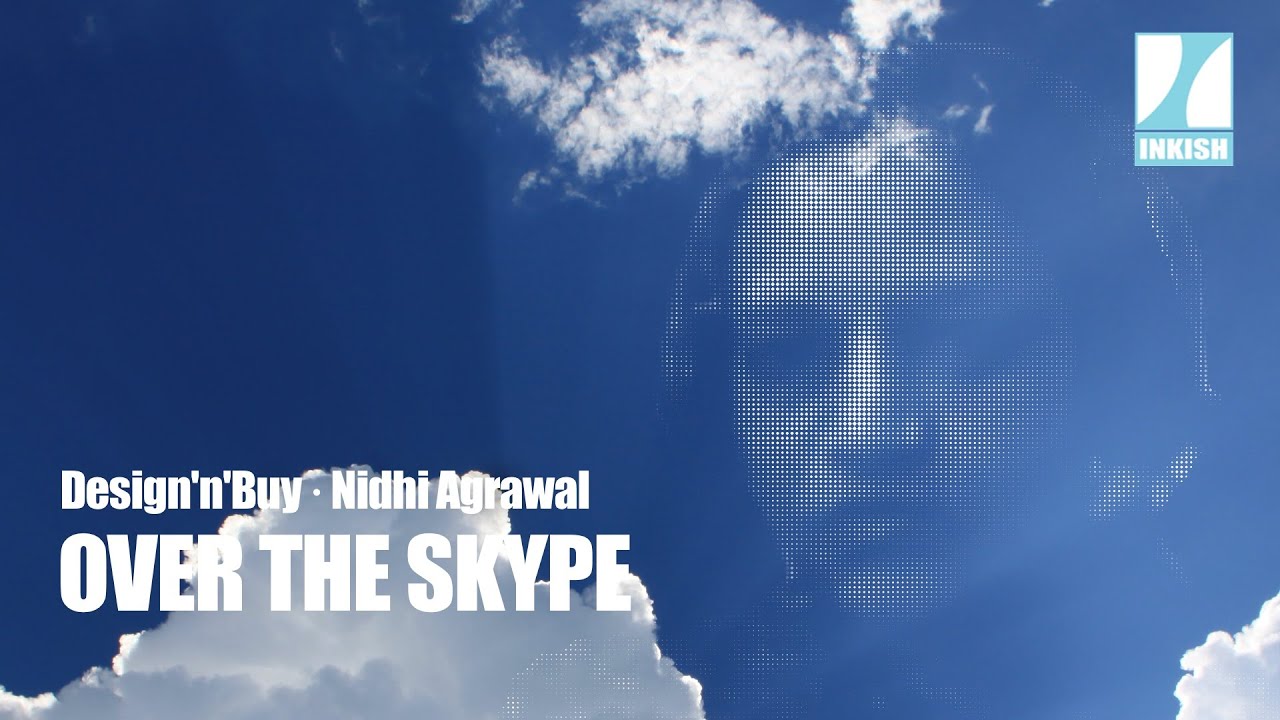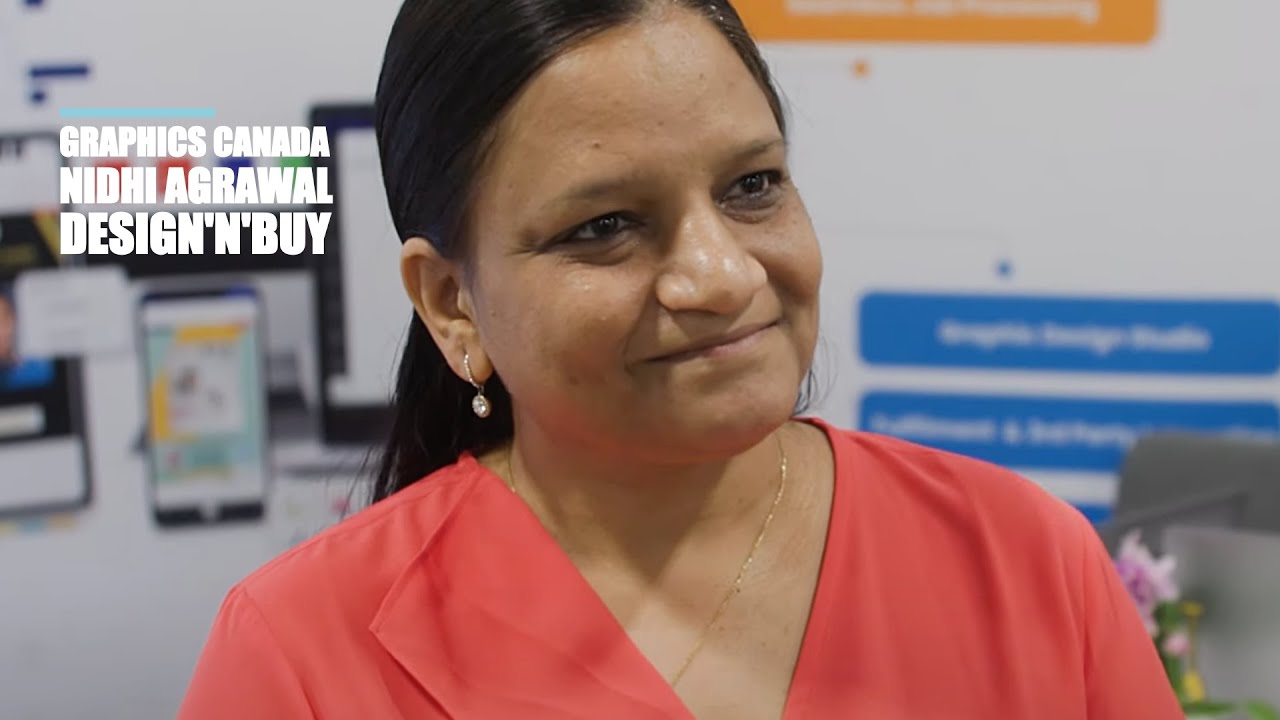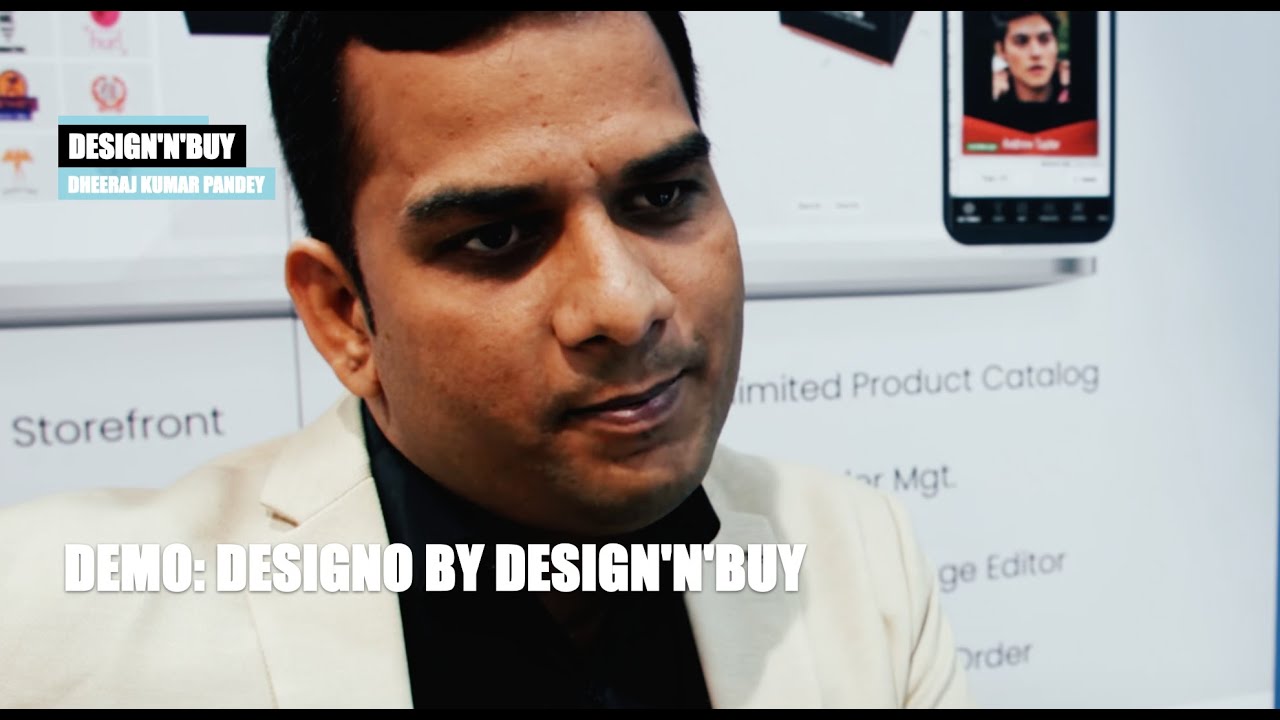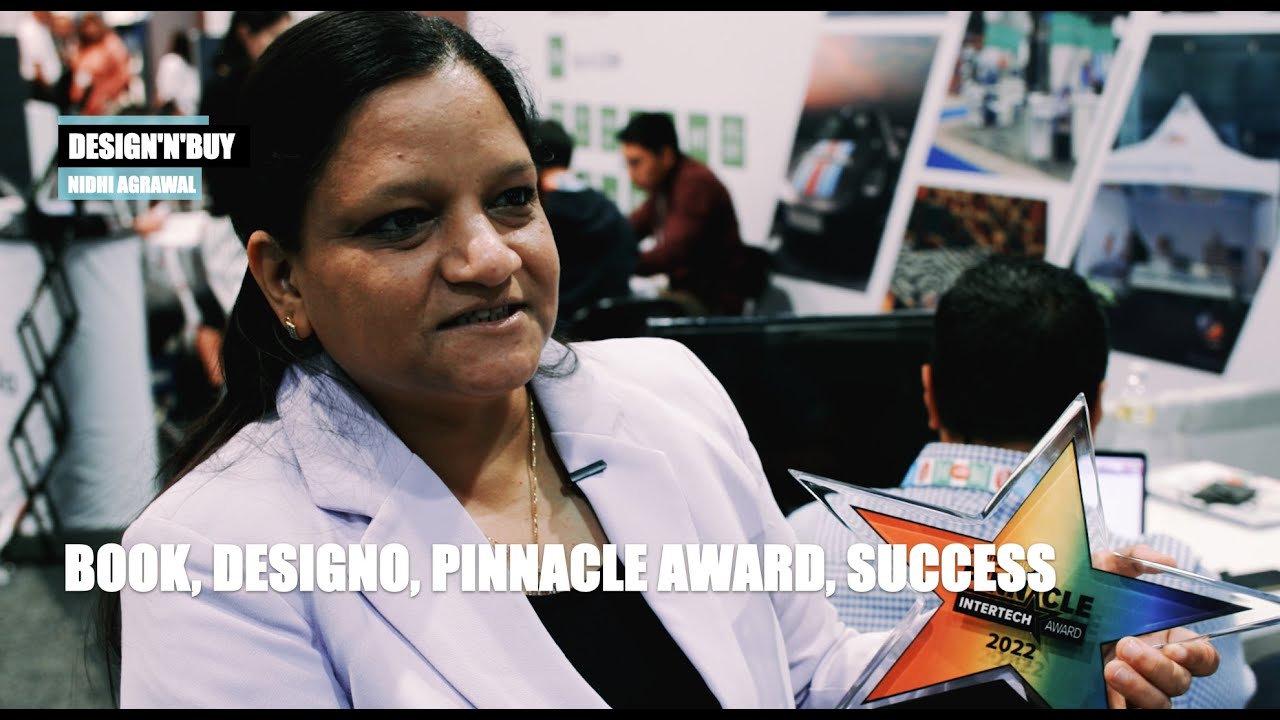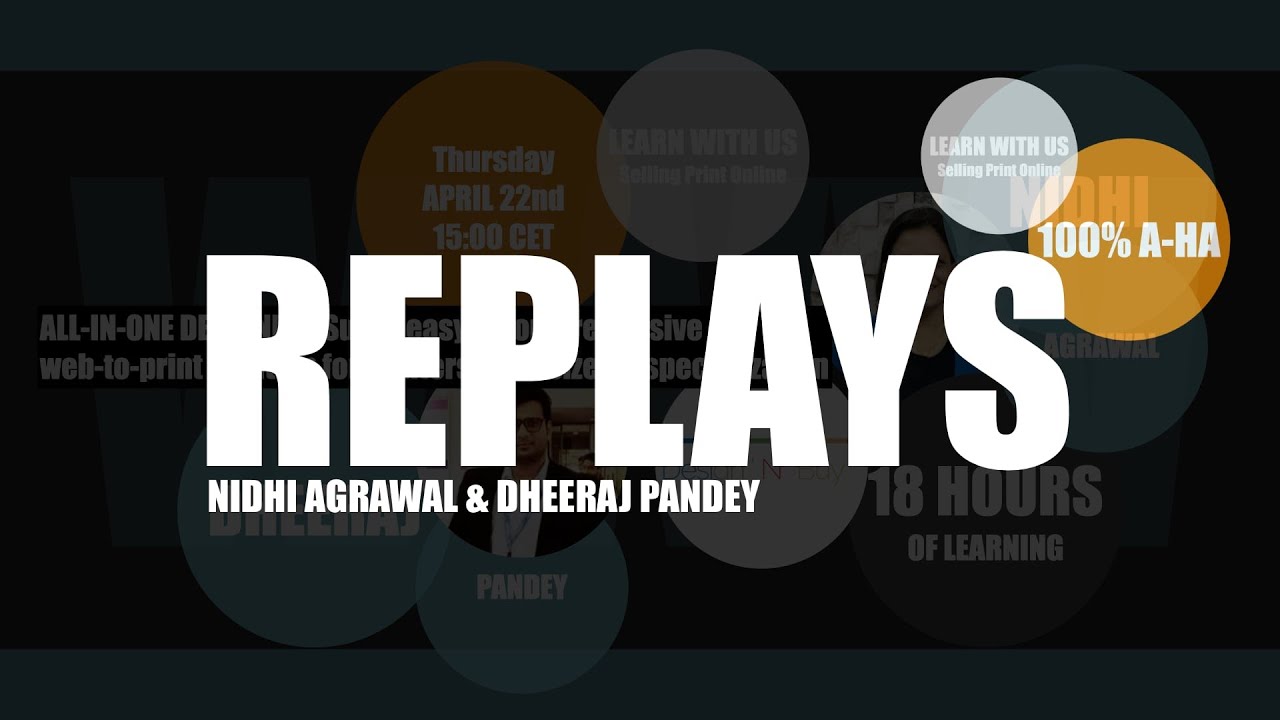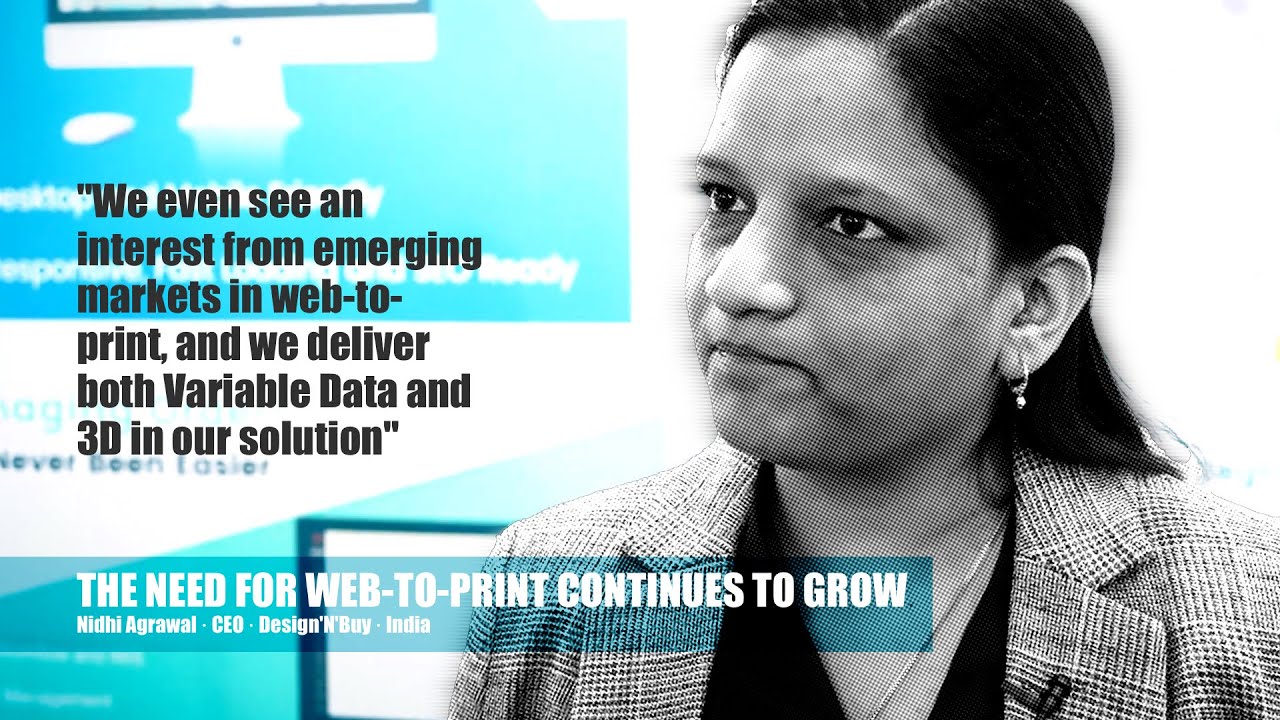Nidihi Agrawal · Over The Skype · Design’n’Buy
Nidhi Agrawal is the CEO and co-founder of Design’n’Buy. Over the years, the Indian based software company have become an international player in the web-to-print industry. In this Over the Skype Nidhi Agrawal tells about the advantages she sees working from home, and of course, also about the new products/features that were supposed to be presented at the now postponed drupa.
As with all our ‘Over the Skype’ interviews, quality is limited to bandwidth, web-cams, and ability to literally LIVE mix the conversations. However, it works, and with Over the Skype, we will bring you more than 20 exciting people, and angles on the industry as it is right now.
Enjoy!
This is Morten from INKISH.TV. Over the Skype is trying to talk to a lot of industry leaders from all over the world. We have been talking to people from Europe, from America. Today, I am so fortunate that I have Nidhi from Design’N’Buy, in Ahmedabad, in India on this session. Welcome on board, Nidhi.
Yeah. Hello. Hello Morten. I’m pleased to have this call with you today.
Me too.
Good afternoon to you and your team.
Thank you. You live in the world’s largest democracy. You have a lot of people in India. How is everyday’s life in Ahmedabad and India now, with a total lockdown of India? Is that something that the authorities are able to control?
I should say, working from home has become a new normal, right? My daughter says that she doesn’t remember if she was ever going to school. This one month has shown us that we human beings can adjust to every circumstances. I think the best part is, it’s the human spirit. I can see people all around who are trying to go on with their lives as best as they can.
Yeah.
Yes, this pandemic has certainly changed all of us in a certain way, but things are going, moving. People are still positive, and we hope we all will soon overcome this together.
Yes. Of course, the crisis has nothing good to offer when it comes to health and also, the mortality that we see in the world. You believe that it has good output in the context of making people little bit more efficient, because working from home also gives you an opportunity to not be limited to your office space. Is that correctly understood?
Yes. There has been times when people fall sick, they can’t come to office. Usually, then they used to take leaves. Now this has shown us that they can still work from home. We never experimented that before, right? That certainly adds a lot of value. I’m looking at all the positive aspects that the pandemic brings us, or brought us. That’s it.
Yeah. Understand that. I could tell you that I think that I have been in India several times, and I know that you have been traveling internationally as well. I can tell you that working from home is not so unusual, at least in where I live from. So, I think that actually the question is sometimes that, are people as efficient when they’re working from home as when they are at the office? I think it’s great that you have experienced that.
Let’s talk about something else because the coronavirus has just [crosstalk 00:03:17] us, basically. You were planning to go to Drupa, that was postponed. Were you planning on showcasing some new products and services at Drupa, or what was your intention of being there?
Okay. Yeah, Morten, so we exhibited in Drupa 2016, and that’s when we opened up our market from Europe. I think we serve lot of clients whom we meet at the show. That’s why we were very positive, exhibiting our products which are now much mature in this last four years. We were actually planning to unveil a couple of our new Web2Print solution specifically for digital textile industry and the packaging industry. Those were the two solutions that we planned to actually unveil at this show, but yeah.
What we did then is, unfortunately when the show was put off for 2021, we decided to work a bit more on the features because we thought, “Then let’s give the first copies to couple of our customers who were interested. Get them tested and then probably get them ready again, with a much mature feature offering for the next edition of the show.” As we all know, no one is sure what’s going to happen next. I guess we’ll be ready to offer them to our customers from June onwards.
Okay. You mentioned, both textile and packaging from a developer’s perspective and from a Web2Print perspective. Is that two areas that are challenging and very different from commercial products, or is it just because you see a business opportunity in that segment?
Okay. That’s an interesting question, Morten, because we do serve lot of apparel decorators, commercial printers, and in-plants. In last couple of years we have seen an increasing demand from the digital textile printers and people who do interiors, wallpapers, and all those wide format stuff, because now the demand for personalization is growing in that sector.
I’ve been speaking to people, and that’s where this idea of having a Web2Print that specifically serves the need of that industry, because many of the features that are needed for, let’s say commercial printers, or photo book printers, or in-plants are of no use to industries like Printeriors where need for personalization is limited to uploading images. The wide format support where output is needed in feets and meters, right?
Yeah.
So definitely, a good tweaking and a bespoke implementation was needed to serve the personalization needs of those industries. That’s where we decided to tailor our solution, to minimize the features and to enhance those features which were befitting to serve those industries well. That’s where we modified and tailored our solution, and we came up with a version which specifically serves to the needs of textile printing, digital textile printing, interiors, wallpapers.
Similarly, we were working with lot of printers from the packaging industry which involves corrugated boxes, labels, personalized labels, stickers and anything to do with the packaging industry. We know that there, the three-dimensional, 360 degree view of the end product was something that customer really wanted to have when they personalize. There were again, other such features which were required to be specific to that industry. We again tailored another version of our Web2Print solution and design studio solution that specifically addresses the need.
What you’re talking about, for example, the 3D representation of an object like a box or something like that. That is something that you offer in the version that you were presenting, here in June, or is it something that is already in your product now?
Yeah. The feature that we already have in the product now is generic. It’s not specific to packaging and boxes because they come in different shapes, dimensions and all that. Now we are specifically working on a personalization design studio where you can even have a specific piece of packaging in the dimensions that you want so that it generates that 3D model at the runtime.
Let’s say if you want a box, probably 12″ x 16″, just put in the coordinates and it will generate that 3D map so that you can personalize it at the runtime. That’s a next level.
Does that mean that when you create a box design as you just described, does that mean that the layout that you get for print is with dielines, and crease lines, and everything is-
Yeah.
… ready to be produced? Okay, that’s pretty cool.
Yeah, yeah. I mean, what printer get will definitely be a print-ready file. The design will be converted by our print engine into a format that’s acceptable for producing that piece of packaging.
The same kind of features that you talk about textile, is that also in relation to, if you want to do, let’s say T-shirts, or scarves, or anything like that? That you have also the cutting patterns for how they should be sewn afterwards, or what is the need for textile industry?
Okay. Majorly for textile, I hope you understand that, because the deal with wide formats, the image quality is of topmost importance. The text should be vector so that they can be scaled up if someone is allowing the ability to add text, or any piece of art or clip art. What we are doing is, we are checking the image quality. We are doing that preflag so that a user is only able to place the order if it’s the acceptable image quality. All the text are auto converted to vector. Similarly, all the clip art. Even that’s fully layer vector PDF file that can directly go for printing. It includes all the cut marks for processing, right?
That means that you basically, take a user’s design and convert that into a vector-based design so you can scale per need. Okay, that is also pretty cool. One of the things I’m curious about is, you have been in the market for some years now, and I think that you have a good reputation in the market for delivering excellent software. The more features that you put into a product like that, it of course broadens your market potential, but does it also makes the product more difficult to sell, because you sell in so many verticals? Is the product packaged, so you have one for textile, and one for commercial, and one for boxing? How are you doing your packaging of your software?
Okay. That’s very relevant question, Morten, because I know, the day you start having a single solution serving the needs of all verticals, it gets complex because you have to put so many different dimensions into it. That’s the reason, at Design’N’Buy, we have different solutions catering to different industries. We have a very lightweight, a plug and play solution that’s easy to adopt for apparel decorators, or promotional gift products manufacturers, and photo products, right?
It’s very lightweight. It works through APIs and can integrate with any platform or an existing website quickly. Though it has a limited feature set, but it is perfect fit for printers of that kind who do narrow scale printing, like on apparels, T-shirts, mugs, and gift products, promotional items. That’s a very specifically designed product. It’s very popular, highly adopted.
The other one we have for commercial printers, there we have clubbed most of the cutting-edge features that can help you to do the banners, and let’s say signs as well as photo books under one hood. That makes it easy for an adoption. As I said, when we’re deciding to do it for digital textile, or interiors, or packaging, we decided not to shuffle everything together into the same build because that would have made it too complex to adopt for anyone, because I know, someone who is focusing on textile, may not be doing photo books.
Precisely, yeah.
Why should he be bothered about the features about those? Our core base is same, but then we have spun off this different industry-specific solutions and packaged them so that someone who needs a solution for packaging, only gets to deal with what he needs to do, and set up his online website for offering personalized packaging.
I like that.
You don’t need to deal with anything unwanted.
I like that approach. I think it makes it simpler to market. I think it’s easier for printers to adapt to these. Seems to be easy-to-go strategy that you have. Final question here, Nidhi. When the coronavirus is hopefully over soon and we get back to a normal life, how do you see the printing market? Will that change a lot due to all the changes? Some of them, we have talked upon, that people might be working more home, travel less, thing like that. But do you think that the printing market will return to the good old times?
I think corona has made us to learn, doing a new way of business, right? I’ve been talking to lot of printers, or our customers, prospects in this last four to six weeks, and it seems that print is here to stay. Only thing is, difference is going to be, printers are now ready to change their way of selling prints. I think people will now try to move towards reducing as much human interaction that was needed, as far as it’s related to sales, support, and delivery.
I think a lot of things that can be done from working from home or without an human interaction, people are now ready to take it online. I guess, much of the things will be concentrated to production, where people need to deal with machine. Rest of the processes or parts of the printing businesses can be moved online. I have seen a keen interest in printers to explore those areas and looking for setting up their business processes online. That’s about it.
I think that’s not bad for Design’N’Buy because, as you are delivering some of the infrastructure for these less human interactions, sales processes. I guess that you have a bright future ahead of you, right?
Oh, yes. I should say that I’ve been enjoying this talk with our customers because it has even given a lot more insights, what else can be done. Though I’ve been working for more than a decade on this, how to bring printing businesses online? How Web2Print can help them even to run their business efficiently? To cut their in-house cost. When I was speaking to the customers, there were other areas that got uncovered where we can have systems in place, taking care of things that was only possible with human interactions, like preflight proofing. You can say, managing deliveries, interacting with customers and support, correcting the art work.
There are lot more other areas which now can be made possible doing online. Definitely, we are ready. I have taken my notes. I’m going to interact with my product team on all these new aspects of supporting printing business online. Definitely, the time ahead looks good.
Okay. That sounds great. Nidhi, it was a pleasure to talk to you. All the best to you, your team, and your family. Once again, thank you very much for taking time to talk to me and hopefully, inspire some of my audience. Thank you very much and I hope to see you soon in real life.






























































